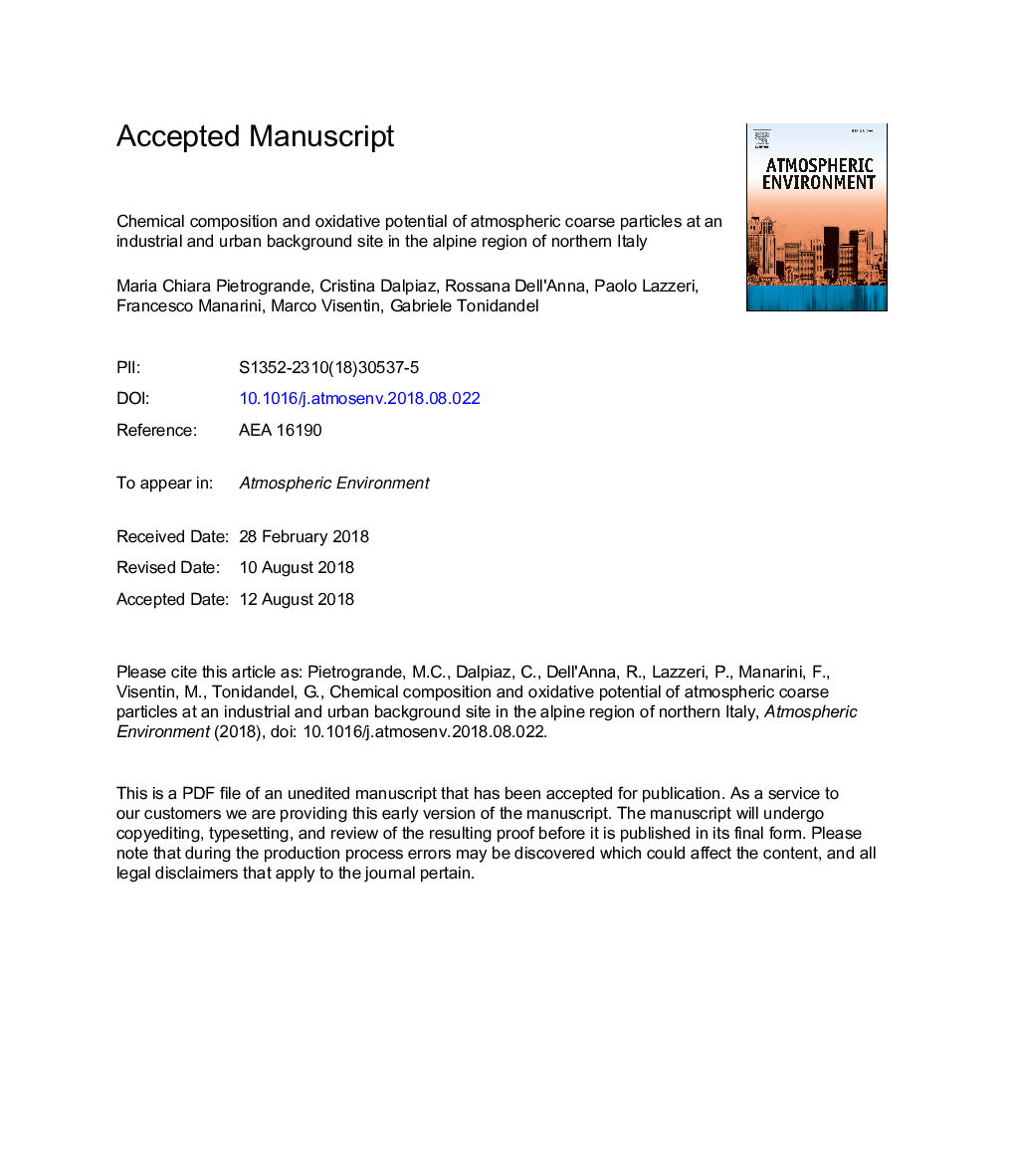| Article ID | Journal | Published Year | Pages | File Type |
|---|---|---|---|---|
| 8863417 | Atmospheric Environment | 2018 | 35 Pages |
Abstract
The chemical composition and oxidative potential (OP) of particulate matter (PM10) samples were investigated at an industrial (Ala) and a background (TN) site in northern Italy. Three emission sources of airborne metals were identified by Positive Matrix Factorization (PMF) analysis, i.e., the zinc coating facility located in the area, the traffic on the nearby motorway and the pesticides normally used in the extensive vineyard cultivation. PM10 redox activity was measured using dithiothreitol (OPDTTV) and ascorbic acid (OPAAV) cell-free assays. Similar OPDTTV responses were obtained at the two sites (0.60â¯Â±â¯0.23â¯mmolâ¯minâ1 mâ3), while higher (OPAAV) values were measured at Ala (1.4â¯Â±â¯1.1â¯nmolâ¯minâ1 mâ3) than at TN (0.7â¯Â±â¯0.4â¯nmolâ¯minâ1 mâ3). Overall, both OPDTTV and OPAAV responses were found to be broadly correlated with several inorganic species, namely ions and soluble metals, and organic components. In particular, OPAAV responses are mainly affected by Zn directly emitted from the zinc factory and Cu used in the vineyard cultivation. Therefore, the higher OPAAV values measured at Ala can be explained by the higher concentration of these metals at the industrial site.
Related Topics
Physical Sciences and Engineering
Earth and Planetary Sciences
Atmospheric Science
Authors
Maria Chiara Pietrogrande, Cristina Dalpiaz, Rossana Dell'Anna, Paolo Lazzeri, Francesco Manarini, Marco Visentin, Gabriele Tonidandel,
